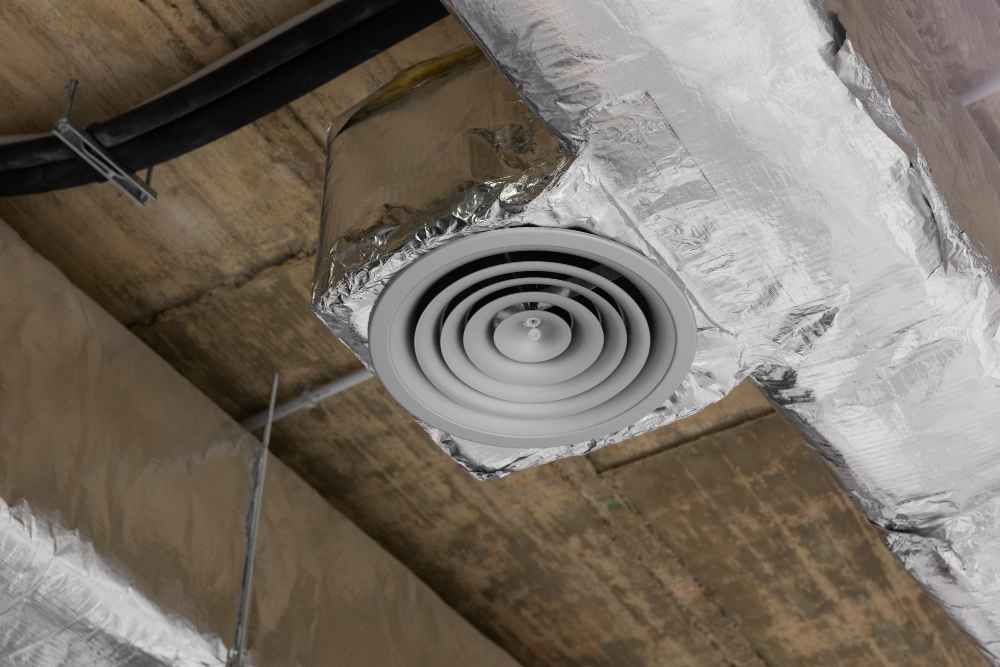Introduction
Ductwork is a necessary but often unsightly component of a basement’s infrastructure. However, with some creative planning and strategic solutions, you can effectively hide ductwork to improve the aesthetics of your basement space. In this comprehensive guide, we’ll explore various methods and techniques for concealing ductwork in your basement, enhancing its visual appeal and functionality.
Assessing Your Basement
Before diving into hiding ductwork, assessing your basement’s layout, dimensions, and existing ductwork configuration is essential. Understanding the location and size of the ducts will help you determine the most suitable hiding methods and materials.
Choosing the Right Approach
Regarding hiding ductwork in a basement, several approaches can be employed, depending on your preferences, budget, and skill level. Some standard methods include:
1. Built-In Enclosures
- Creating Custom Cabinets: Build custom cabinets or enclosures around the ductwork to seamlessly integrate them into the basement’s design. This approach allows for additional storage or display space while concealing the ducts.
- Installing False Walls: Construct false walls or partitions to hide ductwork behind drywall or other finishing materials. This method is ideal for basements with ample wall space and minimal obstructions.
2. Soffits and Bulkheads
- Building Soffits: Install soffits or bulkheads along the ceiling to cover exposed ductwork. Soffits can be customized to match the ceiling’s design or serve as decorative features in the basement.
- Utilizing Existing Structures: Incorporate existing architectural features, such as beams or columns, to create built-in soffits that hide ductwork while adding visual interest to the space.
3. Decorative Elements
- Using Textiles: Hang curtains, drapes, or fabric panels to conceal ductwork in open areas of the basement. Choose fabrics that complement the basement’s decor and can easily be adjusted for maintenance or duct access.
- Installing Decorative Screens: Place decorative screens or room dividers strategically to hide ductwork while adding style and functionality to the basement. Screens come in various materials and designs to suit different aesthetic preferences.
4. Integrated Design Solutions
- Incorporating Built-In Shelving: Design built-in shelving units or bookcases that contain the ductwork seamlessly into their structure. This approach maximizes storage space while minimizing the visual impact of exposed ducts.
- Creating Multi-Functional Spaces: Designate basement areas for specific functions, such as a home office or entertainment center, and integrate ductwork concealment into each space’s overall layout and design.
Implementation Tips and Considerations
- Prioritize Accessibility: When concealing ductwork, ensure that essential maintenance access points remain accessible for inspection, repairs, or adjustments. Incorporate removable panels or access doors into built-in enclosures for easy maintenance.
- Consider Airflow and Ventilation: Avoid obstructing or compromising ventilation systems when hiding ductwork. Maintain proper clearance around vents, registers, and air returns to ensure optimal performance and air circulation.
- Ensure Structural Integrity: When modifying or constructing built-in enclosures, adhere to building codes and provide structural integrity. Consult a professional contractor or structural engineer if you need help with load-bearing requirements or potential structural implications.
- Budget and Time Considerations: Evaluate your budget and time constraints when choosing the most appropriate method for hiding ductwork. Some solutions may require extensive renovations or professional assistance, impacting cost and timeline.
Incorporating Lighting Solutions
When hiding ductwork in your basement, consider incorporating lighting solutions to enhance the overall ambiance and functionality of the space. Strategic placement of lighting fixtures can draw attention away from ductwork while illuminating critical areas of the basement.
Here are some lighting options to consider:
- Recessed Lighting: Install recessed lighting fixtures along the perimeter of soffits or bulkheads to provide indirect illumination. This creates a soft, diffused glow that minimizes the visibility of ductwork while illuminating the surrounding areas.
- Track Lighting: Use track lighting systems to highlight the basement’s specific features or architectural elements, such as built-in shelving or decorative screens. Adjustable track heads allow you to direct light precisely where needed, diverting attention from exposed ducts.
- Wall Sconces: Mount wall sconces on built-in enclosures or false walls to add decorative lighting accents while concealing ductwork. Choose fixtures with adjustable arms or shades to customize the direction and intensity of light.
- Under-Cabinet Lighting: Install under-cabinet lighting fixtures beneath built-in shelving or cabinets to illuminate workspaces or display areas. This enhances visibility and adds a subtle layer of ambient lighting to the basement.
Incorporating Decorative Finishes
In addition to concealing ductwork, incorporating decorative finishes can further camouflage their presence and enhance the overall aesthetic appeal of your basement. Consider the following options:
- Textured Finishes: Apply textured finishes, such as faux or textured paint, to built-in enclosures or false walls to create visual interest and depth. Textured surfaces can disguise imperfections and blend seamlessly with the surrounding decor.
- Decorative Molding: Install decorative molding or trim along the edges of built-in enclosures or soffits to add architectural detail and sophistication. Choose molding styles that complement the overall design aesthetic of your basement.
- Wallpaper or Wall Murals: Apply wallpaper or murals to built-in enclosures or false walls to create a focal point and distract from exposed ductwork. Opt for patterns, textures, or scenic designs that enhance the basement’s theme or style.
Incorporating Functional Design Elements
When hiding ductwork in your basement, consider integrating functional design elements that serve a dual purpose, such as storage or seating.
Here are some ideas to inspire your basement renovation:
- Built-In Bench Seating: Construct built-in bench seating along the perimeter of soffits or bulkheads to maximize seating capacity while concealing ductwork. Incorporate hidden storage compartments beneath the benches for added functionality.
- Integrated Media Console: Design a built-in media console or entertainment center seamlessly incorporating ductwork concealment. Include built-in shelving, cabinets, and media storage to organize electronics and media components.
- Multi-Functional Workstation: Create a multi-functional workstation with built-in desks, shelves, and storage cabinets that conceal ductwork while providing a designated workspace. Customize the design to accommodate computers, printers, and office supplies.
Conclusion
Hiding ductwork in a basement can significantly improve the overall aesthetics and functionality of the space, creating a more inviting and cohesive environment. By considering your basement’s layout, choosing the right approach, and implementing strategic solutions, you can effectively conceal ductwork while enhancing the basement’s design and usability. There are numerous ways to transform your basement into a more attractive and comfortable living area, whether through built-in enclosures, decorative elements, or integrated design solutions.










